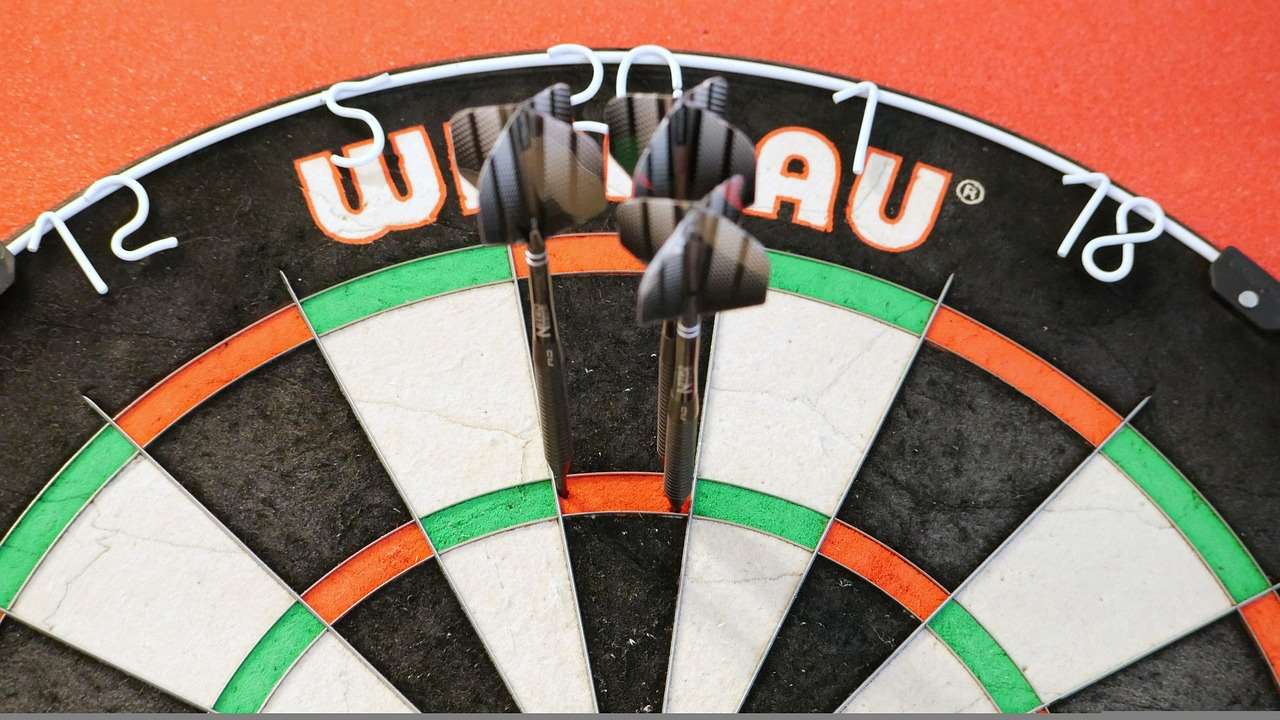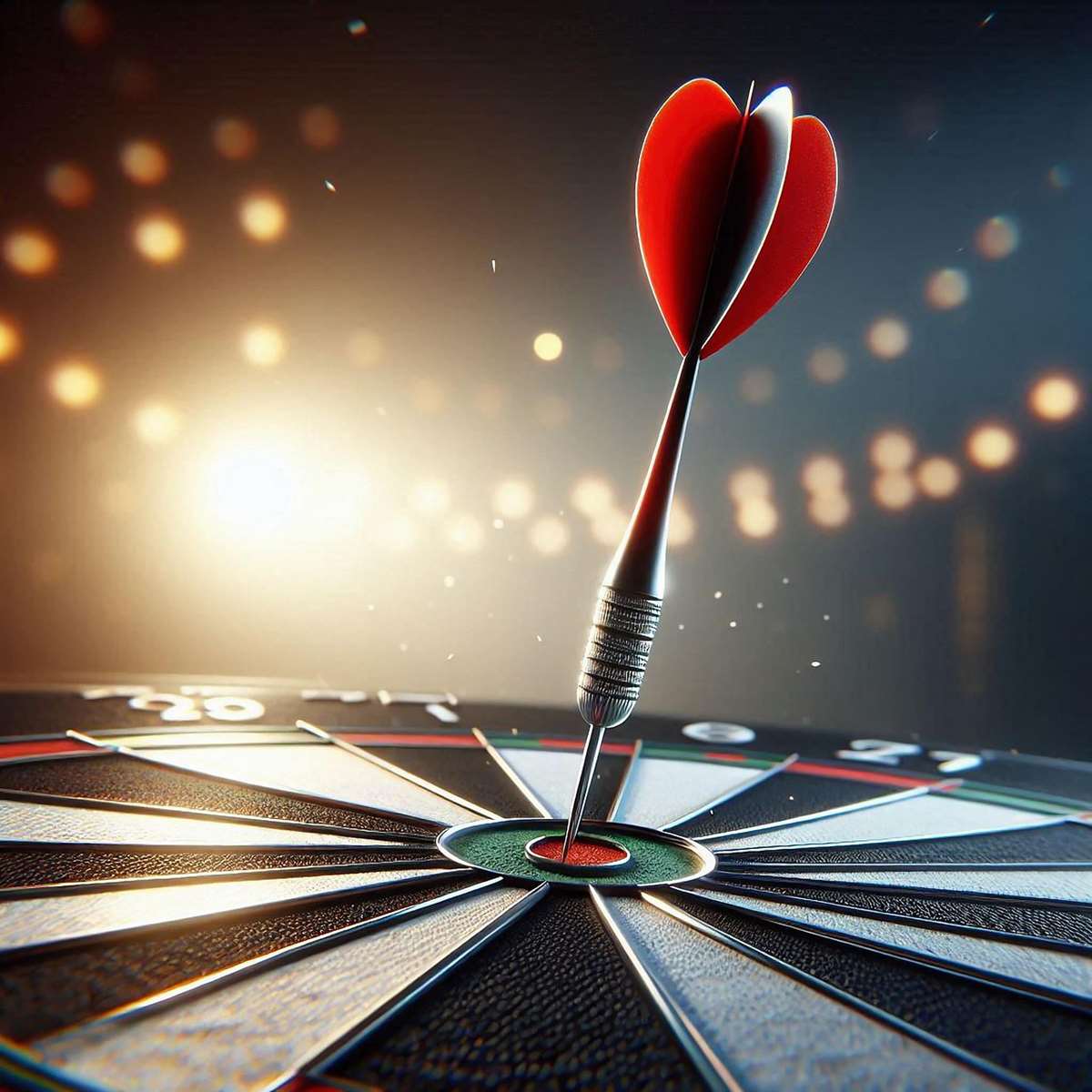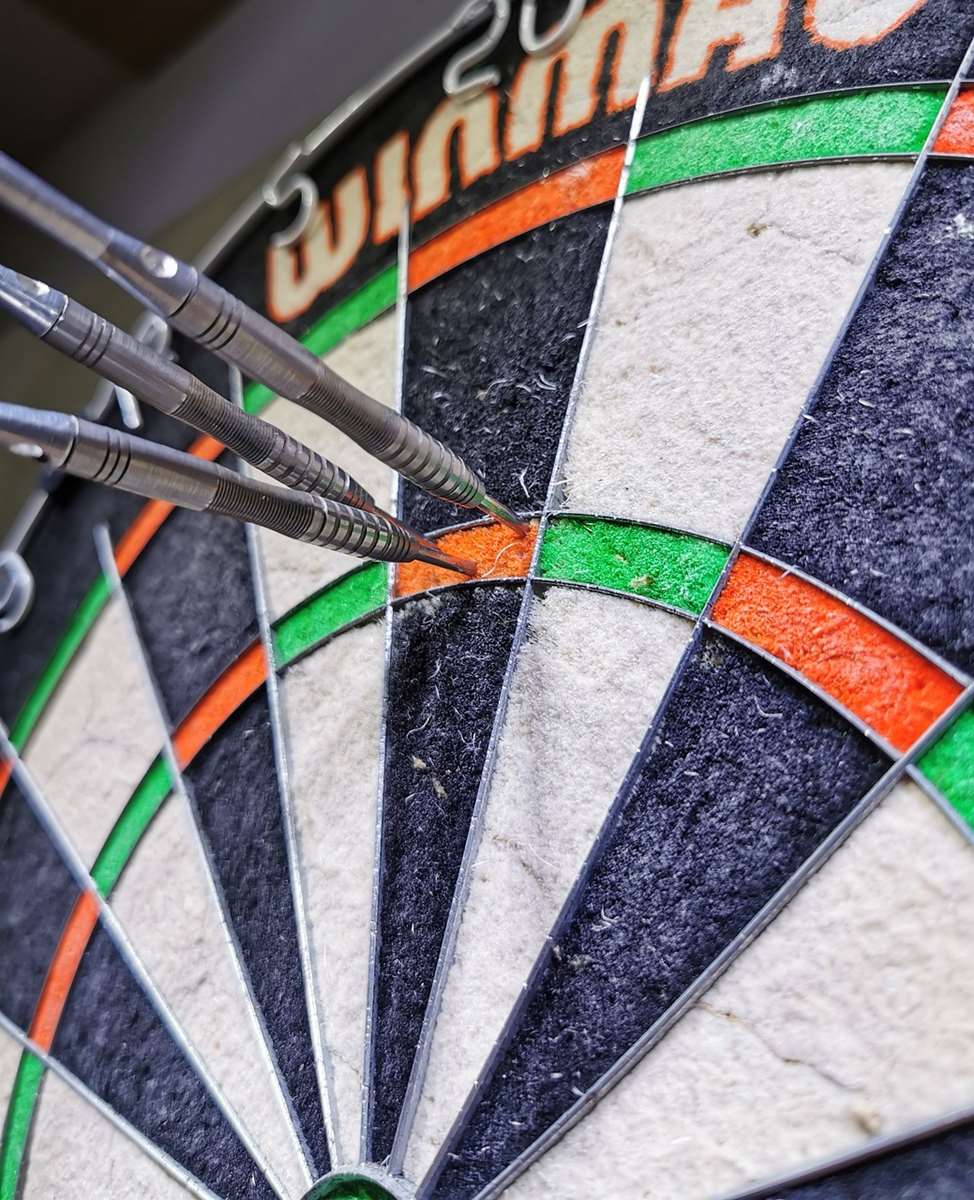The rules of darts are far more than just guidelines; they’re the scaffolding that gives the game its unique structure, challenge, and appeal. Understanding how rules shape darts game allows you to appreciate the nuances of strategy, skill, and even sportsmanship involved. This article will explore the crucial aspects of dart rules, their impact on gameplay, and how even slight modifications can dramatically alter the experience.
⚠️ Still Using Pen & Paper (or a Chalkboard)?! ⚠️
Step into the future! The Dart Counter App handles all the scoring, suggests checkouts, and tracks your stats automatically. It's easier than you think!
Try the Smart Dart Counter App FREE!Ready for an upgrade? Click above!
How Rules Shape Darts Game: Defining the Playing Field
The fundamental rules of darts dictate everything from the dimensions of the board and the throwing distance to the scoring system and acceptable throwing techniques. These aren’t arbitrary choices; they’ve been refined over centuries to create a game that’s both challenging and fair. The official rules, as standardized by organizations like the World Darts Federation (WDF) and the Professional Darts Corporation (PDC), provide a consistent framework for competition worldwide. Deviations from these core regulations, though common in casual settings, often change the essence of the game. For example, if you need to work with a small space, you might want to look at Adapting darts rules for small spaces: tips and tricks.
The official setup is critical. The height of the dartboard’s bullseye (5 ft 8 inches from the floor) and the distance from the oche (throwing line) to the board (7 ft 9 1/4 inches) are standardized. Even small deviations can significantly impact accuracy and strategy. Imagine playing on a board that’s slightly too high or low; the trajectory of your darts would be thrown off, requiring constant adjustments. Similarly, altering the throwing distance changes the degree of difficulty and favors different throwing styles.

The Importance of Standardized Equipment
Beyond the board and the oche, even the **darts** themselves are subject to regulations in professional play. Weight restrictions and dimensional limits ensure that no player gains an unfair advantage through specialized equipment. This focus on standardized equipment levels the playing field, emphasizing skill and strategy over technological advantages.
The **scoring system**, a cornerstone of how rules shape darts game, is also meticulously defined. The concentric rings and segments of the dartboard, each with its assigned point value, create a complex matrix of strategic options. The double and treble rings add an extra layer of risk and reward, demanding precision and control. Without this intricate scoring system, darts would be a far less compelling and strategic game. You may be interested to learn more about Basic Darts Fundamentals for Beginners.
Governing Throwing Techniques and Fair Play
The rules of darts extend beyond just the physical setup; they also govern the act of throwing and ensuring fair play. While the specifics can vary slightly between different organizations, the core principles remain consistent.
- Foot Placement: Players must stand behind the oche when throwing, and at least one foot must remain behind the line throughout the throw. This prevents players from gaining an unfair advantage by encroaching on the throwing distance.
- Throwing Order: The order of play is typically determined by a “bull-up” or by a coin toss, ensuring fairness in the initial stages of the game.
- Dart Retrieval: Players are generally allowed to retrieve their darts after each throw, but they must do so without obstructing other players or interfering with the board.
These regulations, though seemingly minor, are crucial for maintaining order and preventing disputes. They create a level playing field where skill and strategy are the determining factors.
Furthermore, issues of etiquette and sportsmanship are implicitly enforced through these rules and the overall culture of the game. While not explicitly written down, respecting opponents, acknowledging good throws, and avoiding disruptive behavior are all expected. These unwritten rules contribute to the positive atmosphere of darts and enhance the enjoyment for everyone involved.

How the 501 Rule Set Dictates Strategy and Gameplay
The most popular format of darts, 501, showcases how rules shape darts game. The objective is simple: reduce your score from 501 to zero, but the nuances within the rules dictate the strategy employed.
- Starting Score: Each player begins with a score of 501.
- Turn Structure: Players take turns throwing three darts per visit to the board.
- Scoring: The score for each visit is deducted from the remaining total.
- Checkout Rule: The crucial rule is that a player must finish on a double or the bullseye to win. This requires strategic planning and precision aiming, especially as the score dwindles. If a player scores more than they need to reach zero, or if they don’t finish on a double, the turn is a “bust,” and the score reverts to what it was at the start of that turn.
The “checkout on a double” rule is a game-changer. It forces players to think several moves ahead, anticipating the best possible combinations of darts to leave themselves with a manageable double. Failing to plan can lead to frustrating scenarios where a player gets stuck on an awkward number, unable to finish the game. It can be really helpful for new players if you start with Simplified 501 game rules for novice players.
For example, a player with 32 remaining might aim for the double 16. A player with 40 remaining would be looking at double 20, and so on. The skill lies not just in hitting the target, but in calculating the optimal route to a winning checkout. This complexity is what makes 501 such a captivating and strategic game.

Variations and Modified Rules: Altering the Darts Experience
While the standard rules of darts provide a solid foundation, numerous variations exist, each with its own unique set of rules and challenges. These variations demonstrate how rules shape darts game by creating entirely different experiences.
- Around the Clock: Players must hit each number on the dartboard in sequence, starting with 1 and progressing to 20. The first player to hit all the numbers wins. This variation emphasizes accuracy and consistency.
- Cricket: This strategic game involves claiming numbers by hitting them three times before your opponent does. Cricket requires both scoring ability and tactical thinking to block your opponent and rack up points.
- Killer: A social game where each player gets assigned a number. To become a “killer,” they must hit their number three times. Killers can then target other players’ numbers, eliminating them from the game.
These variations, and countless others, demonstrate the versatility of darts and the power of rules to create diverse gameplay experiences. They can be adapted for different skill levels, group sizes, and desired levels of complexity. You might even find ideas for Creative dart rules for parties and social gatherings.
Even slight modifications to the standard rules can have a dramatic impact. For example, allowing players to start and finish on any number removes the strategic challenge of the double-out rule in 501. Conversely, requiring players to finish on a specific double (e.g., double 16) adds an extra layer of difficulty and precision.

Handicap Systems: Making Darts More Inclusive
To make darts more enjoyable for players of varying skill levels, handicap systems can be implemented. These systems adjust the rules to level the playing field and create a more competitive environment. This is another example of how rules shape darts game for a better player experience.
One common handicap system involves giving weaker players a head start by reducing their starting score in 501. For example, a beginner might start at 401, while a more experienced player starts at 501. This gives the beginner a better chance of competing and staying engaged in the game.
Another approach is to award extra points to weaker players for hitting certain targets. For example, hitting the bullseye might be worth double points for a beginner. This incentivizes weaker players to aim for higher-value targets and rewards their progress.
Ultimately, the goal of handicap systems is to create a more inclusive and enjoyable experience for everyone involved. It can be extremely helpful to use How to make darts fairer with handicap rules to improve the overall experience.
By carefully adjusting the rules to compensate for skill differences, handicap systems can transform darts from a potentially lopsided competition into a fun and engaging activity for players of all abilities.

The Enduring Appeal of Darts: A Testament to Well-Crafted Rules
The enduring popularity of darts is a testament to the effectiveness of its rules. The combination of simple objectives, complex scoring, and strategic decision-making creates a game that’s both accessible to beginners and challenging for seasoned professionals.
The rules of darts have evolved over centuries, shaped by countless players and organizations seeking to refine the game and enhance its appeal. The result is a set of regulations that are both elegant and effective, providing a framework for fair competition and engaging gameplay.
From the dimensions of the board to the intricacies of the checkout rule, every aspect of darts is governed by carefully considered regulations. These rules not only define the game but also shape the strategies, skills, and even the culture that surrounds it.
Understanding how rules shape darts game is essential for appreciating the nuances of this timeless sport. So, grab your darts, familiarize yourself with the rules, and experience the thrill of this captivating game for yourself. Explore different game variations and consider adjusting the rules to suit your skill level and preferences. The world of darts is vast and varied, waiting to be discovered.
Hi, I’m Dieter, and I created Dartcounter (Dartcounterapp.com). My motivation wasn’t being a darts expert – quite the opposite! When I first started playing, I loved the game but found keeping accurate scores and tracking stats difficult and distracting.
I figured I couldn’t be the only one struggling with this. So, I decided to build a solution: an easy-to-use application that everyone, no matter their experience level, could use to manage scoring effortlessly.
My goal for Dartcounter was simple: let the app handle the numbers – the scoring, the averages, the stats, even checkout suggestions – so players could focus purely on their throw and enjoying the game. It began as a way to solve my own beginner’s problem, and I’m thrilled it has grown into a helpful tool for the wider darts community.